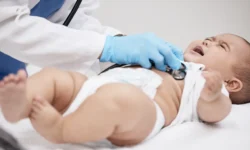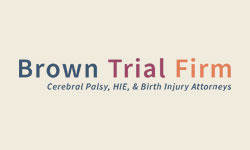Medical errors can lead to your child’s life-long disability
In almost every labor and delivery department in the country these days, they use an electronic fetal heart monitor, which is a device looks kind of like a computer with the screen, and it attaches through leads to the mother’s stomach. So, there are electrodes placed on a mother’s stomach leads that detect the baby’s heart rate and also monitor the contractions of the mother’s uterus. During labor, doctors and nurses should be trained and should monitor the baby’s heart rate to watch for signs that the baby may be in trouble. The labor process can continue only so long as it is safe for the baby to remain inside. If there are things that are happening to the baby that is causing the baby not to have enough oxygen, it may be necessary for the baby to be delivered quickly. In a c-section – or cesarean section, where there’s a surgical procedure to remove the baby, doctors and nurses should be trained and hospitals should have policies and procedures and protocols for monitoring the baby’s heart rate and the contractions on the fetal heart monitor strip.
If you have a child who has suffered an injury during labor and delivery and you are wondering whether or not there had been signs on the monitor that would have alerted doctors and nurses to a potential problem, we would be happy to look at the medical records for you to review the fetal heart monitor strips and see if there were indications that your child should have been delivered urgently or more quickly with cesarean delivery.
A C-section, or cesarean delivery, involves surgical incisions in the mother’s abdomen and uterus to deliver the baby. This procedure is commonly recommended when a normal vaginal delivery could pose risks or complications for the mother or the baby. While C-sections can reduce the likelihood of certain birth injuries, they also carry potential risks, including the possibility of harm to the newborn during the procedure.
What are the most common reasons for a C-section?
C-sections were originally used to help save babies after their mothers died in childbirth. However, over time, the procedure has become exceedingly common and is used for a variety of reasons. Many of them involve health-related issues, but in some cases, a mother might simply prefer a cesarean section over giving birth vaginally.
There are certain reasons why a woman might need a C-section to deliver her child. The following are the most common:
- Fetal distress
- Maternal health problems, such as a heart condition or herpes infection
- Being pregnant with multiples (twins, triplets, etc.)
- Labor fails to progress
- Placental problems such as placenta previa
- Prolapsed umbilical cord
- Birth canal obstruction
- Previous cesarean birth
- Older maternal age
Causes of C-section birth injuries
Although birth injuries from C-section deliveries aren’t common, they can still happen. The primary causes of injury to babies in such deliveries include the following:
- Premature delivery
- Delayed decision to perform a C-section
- Medical errors during a C-section
Premature delivery by cesarean section
Planned C-sections scheduled before the mother’s due date can create risks for the unborn child. If birth takes place 2 weeks before the due date, the baby can be pre-term, and even a single week of development can make a significant difference in the risk of complications for the newborn.
The lungs are among the last parts of the body to develop, and infants born by scheduled C-sections are more likely to develop tachypnea (abnormally fast breathing during the first few days after birth). Additionally, C-sections performed before 39 weeks may increase the risk of respiratory distress syndrome, a condition in which the child has difficulty breathing.
Delayed decision to perform a C-section
When a doctor delays in making the decision to perform a necessary C-section, the baby can suffer physical injuries, like broken bones and nerve damage, as well as oxygen deprivation, which can cause damage to the brain.
Oxygen deprivation, which can result in injuries like cerebral palsy or hypoxic-ischemic encephalopathy (HIE), can occur when the baby is in the birth canal too long or when the child is too large and there is too much pressure on the head or umbilical cord.
Medical errors during C-section surgery
It’s also possible for the doctor performing the C-section delivery to injure the baby during the surgery. In fact, according to one study published in the National Institutes of Health (NIH), just over 1% of all cesarean deliveries result in injuries to the fetus.
Injuries to the fetus caused by physicians performing these surgeries included:
- Skin lacerations
- Cephalohematoma (blood beneath the dense, fibrous membrane covering the skull, caused by disruption of blood vessels during birth)
- Fractures to the skull or collarbone
- Brachial plexus injuries (injuries to the nerves that travel from the spinal cord in the neck down the arm)
- Facial nerve palsy (damage to the facial nerve that weakens the muscles of the face)
What are the most common C-section injuries to mothers?
Although many mothers opt for a C-section even when they don’t have any medical conditions that could make vaginal birth risky, doctors often advise against it. This is because women and even their babies have a higher risk of suffering injuries.
The following are the most common C-section injuries to mothers:
- Excessive bleeding
- Blood clots
- Uterine rupture and other organ damage
- Surgical site infection
- Surgical injuries
- Endometritis
- Adverse reaction to anesthesia
What are the most common causes of C-section injuries?
Different factors can lead to C-section injuries, but there are 2 instances that are more likely to result in injuries to the mother or baby or both of them.
The first is when mistakes are made during a cesarean section surgery. Such mistakes can result in a greater risk of lacerations to both the mother and child. When this involves perforations to the bowel or bladder in the mother, there’s also a greater chance of her needing additional surgery.
Poor aftercare also frequently leads to C-section injuries. Women can suffer surgical site infections and endometritis, an infection of the uterine lining. Women who have undergone prior C-sections have a higher risk of these injuries.
Are C-section injuries considered medical malpractice?
Most C-section injuries are preventable if a doctor and other medical professionals follow the established standards of care. However, when a doctor or other medical professional fails to adhere to proper procedures during labor and delivery or provides inadequate aftercare, C-section injuries are more likely to happen and may be considered medical malpractice.
Did something go wrong during your C-section?
If you or your child suffered injuries from a C-section because of medical negligence, you have the right to file a medical malpractice lawsuit. At Brown Trial Firm, we understand the physical, emotional and financial toll that a birth injury takes on a family. If you suspect your child’s injuries were caused by medical negligence, contact attorney Laura Brown at Brown Trial Firm today. Laura has years of experience in birth injury law, helping families like yours all across the U.S. get the compensation they deserve.
Contact her for a free consultation of your case.
Have questions about a birth injury?
Sources:
- Mayo Clinic: C-Section
- NIH: Fetal injury associated with Cesarean delivery
- Cerebral Palsy
- Caput Succedaneum and Cephalohematoma
- Neonatal Intracranial Hemorrhage (Childbirth Brain Bleeds)
- Hydrocephalus (Extra Fluid in the Brain Cavity)
- Cervical Dystonia
- Hemiplegia (Brain or Spinal Cord Injury)
- Hemorrhagic Stroke
- Neonatal Stroke
- HIE
- Periventricular Leukomalacia (PVL) Brain Injury
- Infant Seizures
- Spastic Diplegia (Spasticity in the Legs)
- Top Risks for Birth Injuries
- Fetal Alcohol Syndrome
- Facial Paralysis
- Spinal Cord Injuries
- Bell’s Palsy
- Brachial Plexus Nerves & Erb’s Palsy
- Klumpke’s Palsy
- G-Tubes for Newborns
- Medical Errors
- Cesarean Section & Birth Injury
- Negligence in Brain Cooling Treatment
- Craniosacral Therapy
- Occupational Therapy
- Speech Therapy
- Transition From Pediatric to Adult Healthcare
- Surgical Options for Spastic Cerebral Palsy
- Fetal Intolerance to Labor
- Jaundice (Kernicterus)
- Breech Position
- Placental Complications
- Umbilical Cord Problems
- Uterine Rupture
- Cervical Incompetence (Insufficiency)
- Blighted Ovum
- Necrotizing Enterocolitis (NEC) - Intestinal Inflammation
- Cephalopelvic Disproportion
- Meconium Aspiration Syndrome
- Amniotic Fluid Embolism
- Birth Injury from Premature Delivery
- Developmental Delays
- Abnormal Cord Insertion
- Infections at Birth
- Chorioamnionitis Bacterial Infection
- Premature birth
- Oxygen Deprivation
- Listeria
- Birth-Acquired Herpes
- Placenta Previa
- Placental Abruption
- Mismanaged Fetal Malposition
- Rapid Labor
- Obesity Related Birth Injuries
- Intrauterine Growth Restriction
- Blood Clots During Pregnancy
- Ectopic Pregnancy Misdiagnosis
- Myths & Facts About Birth Injuries
- Bacterial Vaginosis
- Gestational Diabetes
- Maternal Mortality Risk
- Oligohydramnios (Low Amniotic Fluid)
- Infections During Pregnancy
- Excessive Bleeding During Pregnancy
- Congenital Syphilis


